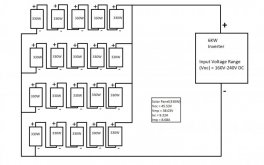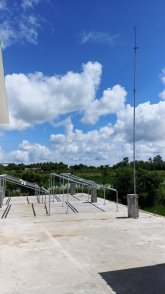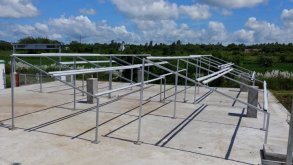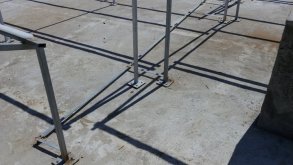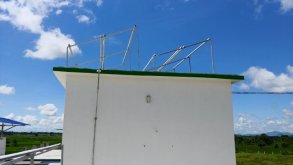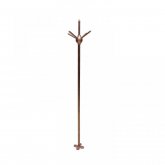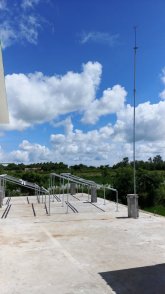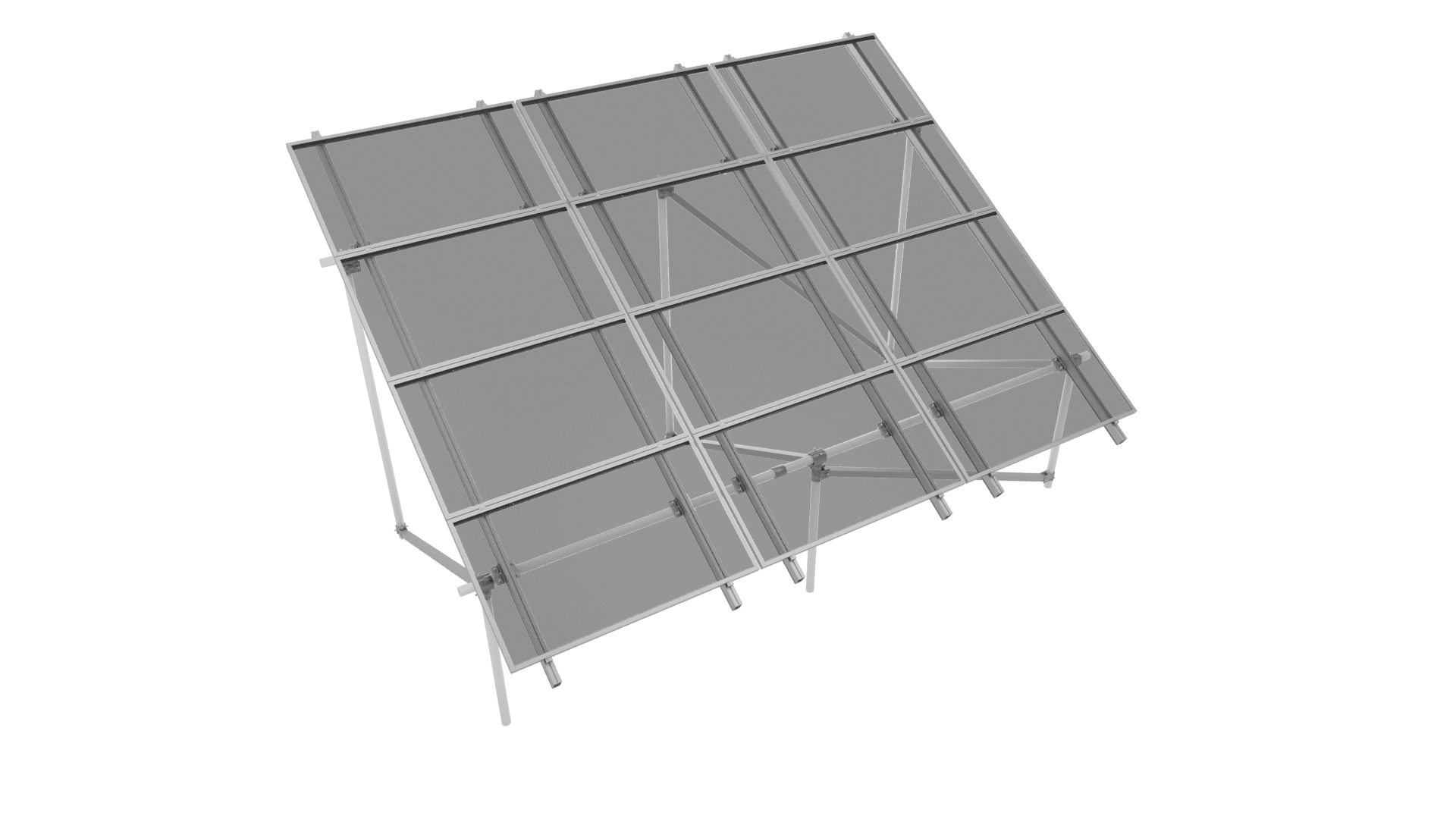Solar_Newbie
New Member
- Joined
- Oct 19, 2020
- Messages
- 8
Good Day folks,
First of all greetings to all. I am installing a 6KW Off-Grid system in my farm due to non-availability of grid. I have purchased a system of 7.5KVA/6KW Inverter, 8 Nos. of 150 Ah batteries and 20 solar panels of 330W power each. I have installed the mounting structure with the correct angle and all. I just want to confirm that my panel connections to the inverter is ideal or not. Or is there any other setup which would provide better efficiency/power. I would hugely appreciate your help on this.
The Polycrystalline panels are rated at 330W(24V) and have the technical details:
(Vmp) - 38.03V
(Voc) - 45.23V
(Imp) - 8.68A
(Isc) - 9.22A
I have attached the technical details PDF of the inverter. It is the NXT+ 7.5KVA model. The inverter has an Input Voltage Range (Voc) of 160V-240V.
I have made a rough diagram of the system in Paint, at least with what limited knowledge I have. The reason for 5 panels in series according to me is because Voc of single panel is 45.23V and the input range of Inverter is 240V max. So in order to keep the input volatge below 240V I took 5 panels in series and then joining 4 such series connections in parallel making a total of 20 panels.
Am I correct in choosing this setup or am I doing something wrong? Appreciate all your help. Thank you.
First of all greetings to all. I am installing a 6KW Off-Grid system in my farm due to non-availability of grid. I have purchased a system of 7.5KVA/6KW Inverter, 8 Nos. of 150 Ah batteries and 20 solar panels of 330W power each. I have installed the mounting structure with the correct angle and all. I just want to confirm that my panel connections to the inverter is ideal or not. Or is there any other setup which would provide better efficiency/power. I would hugely appreciate your help on this.
The Polycrystalline panels are rated at 330W(24V) and have the technical details:
(Vmp) - 38.03V
(Voc) - 45.23V
(Imp) - 8.68A
(Isc) - 9.22A
I have attached the technical details PDF of the inverter. It is the NXT+ 7.5KVA model. The inverter has an Input Voltage Range (Voc) of 160V-240V.
I have made a rough diagram of the system in Paint, at least with what limited knowledge I have. The reason for 5 panels in series according to me is because Voc of single panel is 45.23V and the input range of Inverter is 240V max. So in order to keep the input volatge below 240V I took 5 panels in series and then joining 4 such series connections in parallel making a total of 20 panels.
Am I correct in choosing this setup or am I doing something wrong? Appreciate all your help. Thank you.



